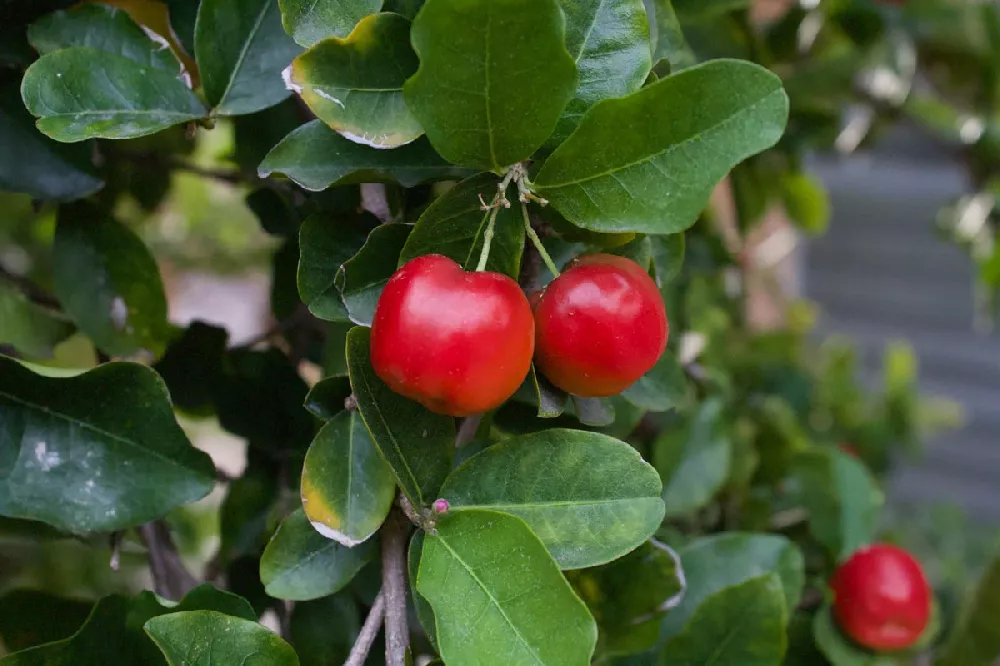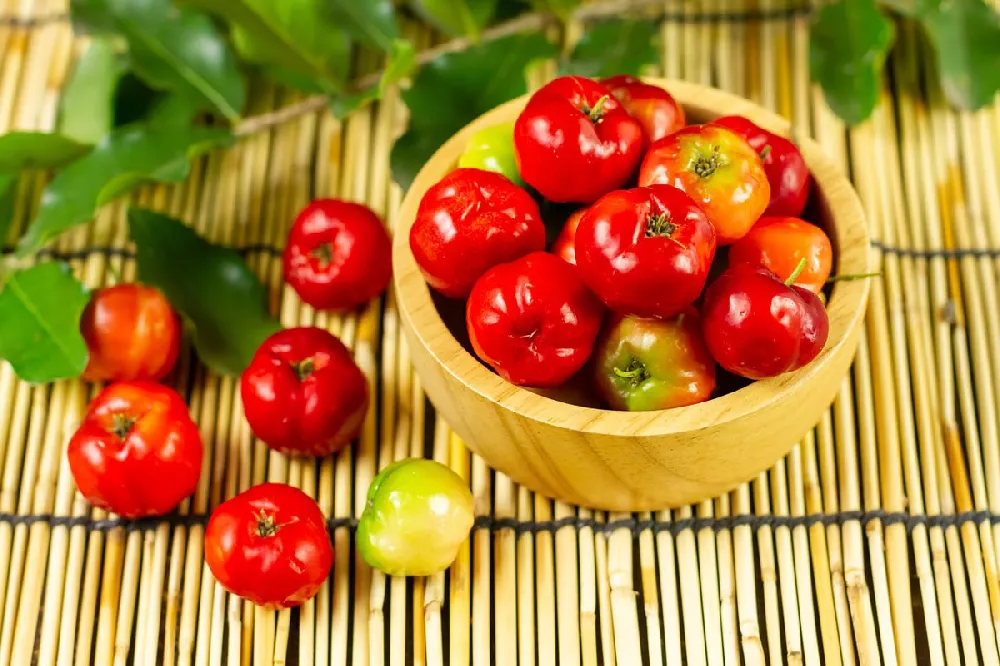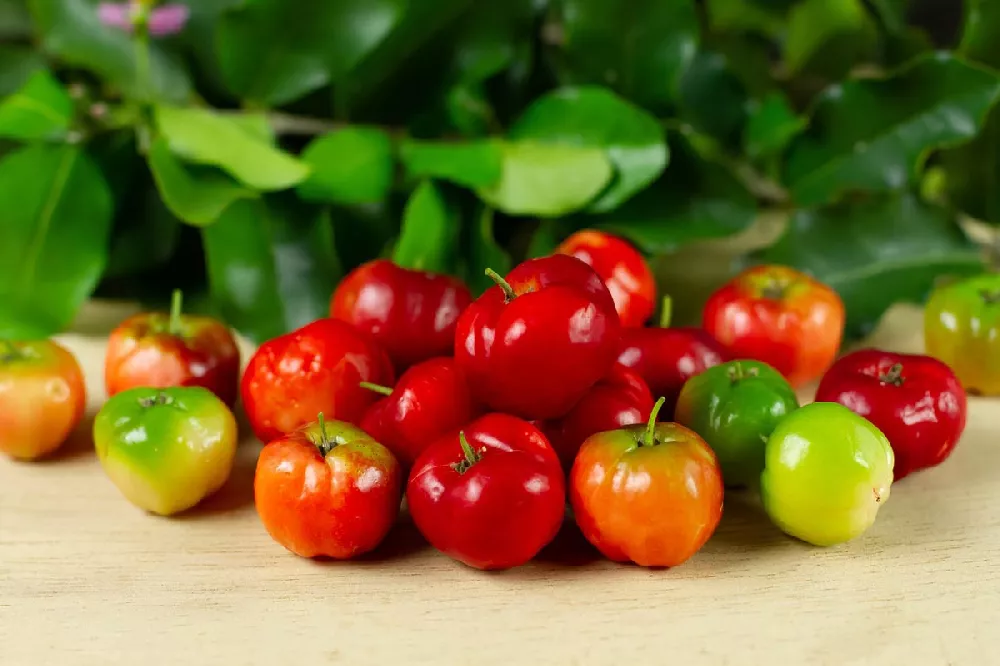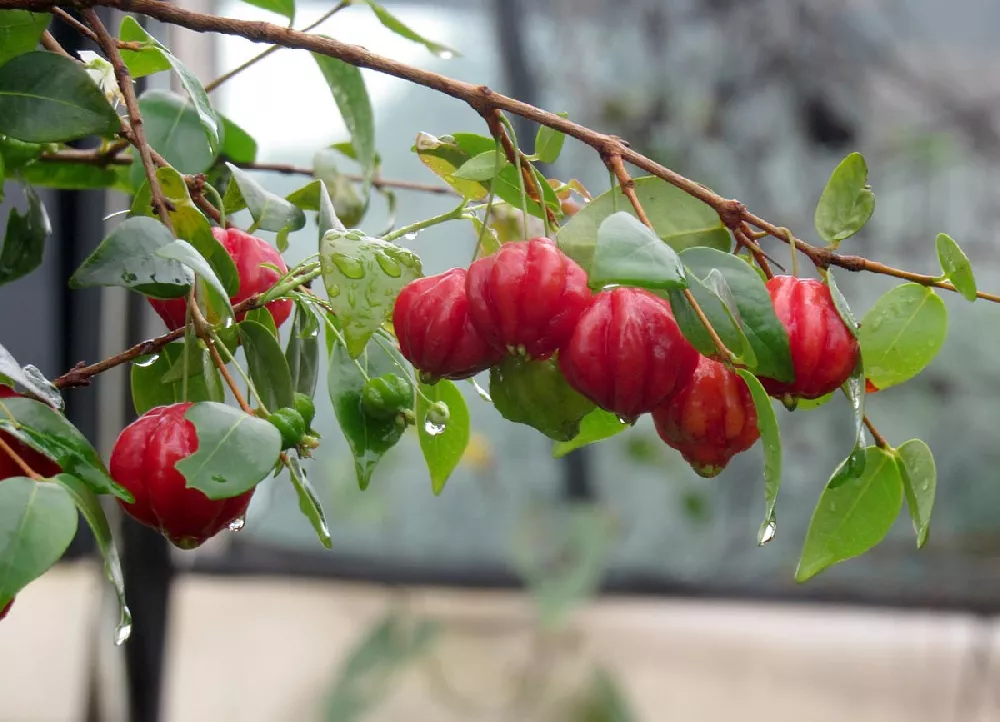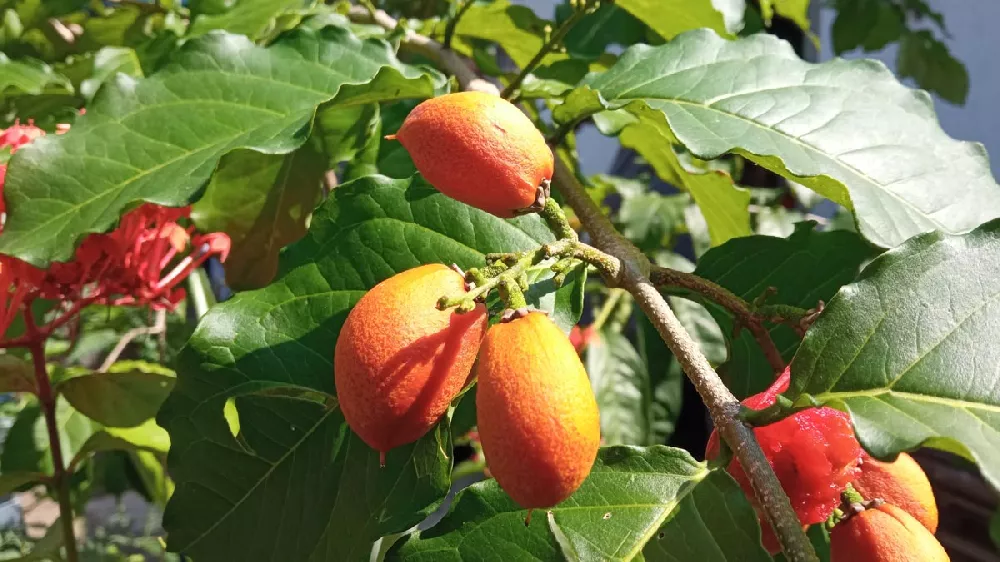- Home >
- Cherry Trees >
- Barbados Cherry
Barbados Cherry for Sale - Buying & Growing Guide
- Ships in 1-2 days
- 1-Year Warranty Eligible
- Pots or accessories are not included unless specified in the product options.
Shipping Details:
Once your order is shipped, you’ll receive an email with a tracking number and estimated delivery date. Most orders ship immediately, but some items are seasonal and may only ship in spring or fall. These products are noted on the website.
Barbados cherry plants, also known as Acerola, or, more formally, Malpighia glabra, are semi-tropical evergreens with a great bonus: a sweet-tart berry similar to a cherry that can be eaten off the tree or used in cooking. Native to Central and South America, it can be grown outdoors in the southern U.S., but it is easily adapted to container growing for those in northern climates. This versatile plant can be grown as either a small tree or a bush, and it is a delight to the eye, especially when in bloom or filled with ripening fruit. At other times, the glossy, dark green leaves make it an excellent specimen plant for the small garden. Here are a few other reasons to take home a Barbados cherry today:
- It produces lovely pink and white flowers in spring.
- It can produce fruit from late spring all the way through to fall.
- The fruit has a tart apple-like taste, and it can be used in salads, jams and jellies, and more.
Plant Care
Sunlight

The Barbados cherry tree needs partial to full sun — four hours or more of direct light a day.
Watering
Barbados cherry trees like moist soil. Water whenever the soil 2 inches below the surface is dry.
Fertilizing

Fertilize in spring with an 8-3-9 formula fertilizer, following the directions on the package.
Planting and Care
Planting instructions
Site your Barbados cherry where it will get adequate sun: at least four hours a day, but preferably more, in soil that drains well. Unpot the sapling and tease out any encircling roots, which can girdle the tree and eventually kill it. Dig a hole that’s as deep as the root ball and twice as wide. Place the tree in the hole and hold it upright while you fill in around it with a good quality topsoil, tamping down as you go to eliminate air pockets. Water thoroughly. Spread a 2- to 3-inch layer of an organic mulch, such as bark chips, around the root zone, being careful that it does not touch the trunk.
Watering and nutrients
When your Barbados cherry is newly planted, it will need water several times a week for the first few months. Once it is showing signs of robust growth, you can taper back on watering. A mature tree needs about 1 inch of water a week — you’ll know if your tree needs water if the soil 2 inches below the surface is dry. In spring, fertilize your tree with a slow-release 8-3-9 formula fertilizer; potted plants benefit from feeding with a slow-release mineral-based fertilizer twice a year.
Pollination
Pollination of Barbados cherry trees is mainly done by insects such as bees, which love the plant’s pink and white flowers. Fruit may form without pollination, but it will be seedless. Since the Barbados cherry is monoecious — meaning that there are male and female reproductive organs on a single plant — you can have a fruit harvest with only one tree; however you will reap more fruit if you have two or more trees placed near each other.
Pruning
When your cherry tree is young, you can prune it in spring or fall to shape the canopy. If you wish it to take a tree form, prune out any suckers that sprout near the base of the tree. Leaving them to grow will cause the plant to form a more bushy, shrub-like shape. Prune out dead, diseased, or damaged branches whenever you see them. Encourage wide, horizontal branches over those that grow vertically, which will help keep the tree to a manageable size.
Pests, diseases, and animals
The Barbados cherry is susceptible to root-knot nematodes, especially if it is grown in sandy soil. Using an organic mulch and giving your tree regular water can help mitigate them. Scale insects may also appear on the tree, but a healthy tree should be able fend off serious infestation. In Florida, the trees may be bothered by Caribbean fruit flies, which attack the fruit. Diseases of the Barbados cherry include anthracnose and leaf spot, a fungal disease. A copper fungicide may help keep it under control.
Harvesting
Barbados cherry trees have a long harvest season, and, depending on the tree’s location, there may be multiple harvests in a single year. Your fruit will generally be ripe roughly 25 days after the end of the flowering season. Handpick the fruit carefully in the morning, when it is cool. Ripe fruit will be red and slightly soft. Store it in the refrigerator and use within several days.
Achieving maximum results
If you live north of USDA hardiness zone 9, you’ll want to plant your Barbados cherry in a container that can be brought inside when the temperatures outside are below 30 degrees Fahrenheit. This isn’t difficult, and with little extra effort, you should be able to grow a healthy, attractive plant. First, choose a container that is roughly twice the size of the root ball, with good drainage in the bottom. Plant your Barbados cherry in a good-quality potting soil, and water it immediately. During the summer, the tree should be fine on your patio or in your backyard. When you bring it inside, position it near a sunny window and turn it regularly so that all sides of the tree get sun. You may need to water more frequently, especially if your house is dry. You can also help your tree by wiping down the leaves regularly with a damp cloth and misting them afterwards. Every three years or so, unpot the tree and trim back the roots to control the tree’s size, replanting in a larger container if you wish.
FAQs
How big does a Barbados cherry get?
A tree grown outdoors may reach a height of 10 to 12 feet, with a canopy that is 10 to 15 feet wide. A container-grown tree can be kept much shorter, however. With the roots restricted by the size of the container, the tree won't get very large, and judicious pruning can keep it to an attractive size and shape that fits with your home interiors.
What can I do with the Barbados cherry fruits?
If you like your fruit with a little tartness to it, they're great to eat right off the tree. But these versatile fruits are also useful in cooking. A Barbados cherry pie is a delightful use of the fruit, and their intense red color makes the cherries a natural for jams and jellies. They are an excellent topper for ice cream or pound cake, and they can be made into sauces and syrups. They can also be made into wine and spirits.
Can I get fruit from a container-grown Barbados cherry?
You may be able to, especially if your tree is healthy and well-cared-for. Of course, with the smaller size of a container-grown plant, your harvest will likewise be smaller. And it's worth noting that the trees fruit more prolifically when there is more than one, so consider, perhaps, two decorative Barbados cherry trees at the entrance to your patio or backyard to increase your pollination rate. You can even help your plants pollinate by using a small paintbrush to gather pollen from one flower and apply it to another.
Compare Similar Products
Customer Reviews
 cherry tree
cherry treejust planted two weeks ago seems good quality
 good
goodArrived in good condition.
You can't add more Product Name - Product size to the cart.
OK